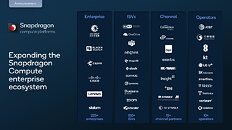
ARM-based Server Penetration Rate to Reach 22% by 2025 with Cloud Data Centers Leading the Way, Says TrendForce
According to TrendForce research, corporate demand for digital transformation including artificial intelligence and high-performance computing has accelerated in recent years, which has led to increasing adoption of cloud computing. In order to improve service flexibility, the world's major cloud service providers have gradually introduced ARM-based servers. The penetration rate of ARM architecture in data center servers is expected to reach 22% by 2025.
In the past few years, ARM architecture processors have matured in the fields of mobile terminals and Internet of Things but progress in the server field has been relatively slow. However, companies have diversified cloud workloads in recent years and the market has begun to pay attention to the benefits ARM architecture processing can provide to data centers. TrendForce believes that ARM-based processors have three major advantages. First, they can support diverse and rapidly changing workloads and are more scalability and cost-effective. Second, ARM-based processors provide higher customization for different niche markets with a more flexible ecosystem. Third, physical footprint is relatively small which meets the needs of today's micro data centers.
In the past few years, ARM architecture processors have matured in the fields of mobile terminals and Internet of Things but progress in the server field has been relatively slow. However, companies have diversified cloud workloads in recent years and the market has begun to pay attention to the benefits ARM architecture processing can provide to data centers. TrendForce believes that ARM-based processors have three major advantages. First, they can support diverse and rapidly changing workloads and are more scalability and cost-effective. Second, ARM-based processors provide higher customization for different niche markets with a more flexible ecosystem. Third, physical footprint is relatively small which meets the needs of today's micro data centers.





































